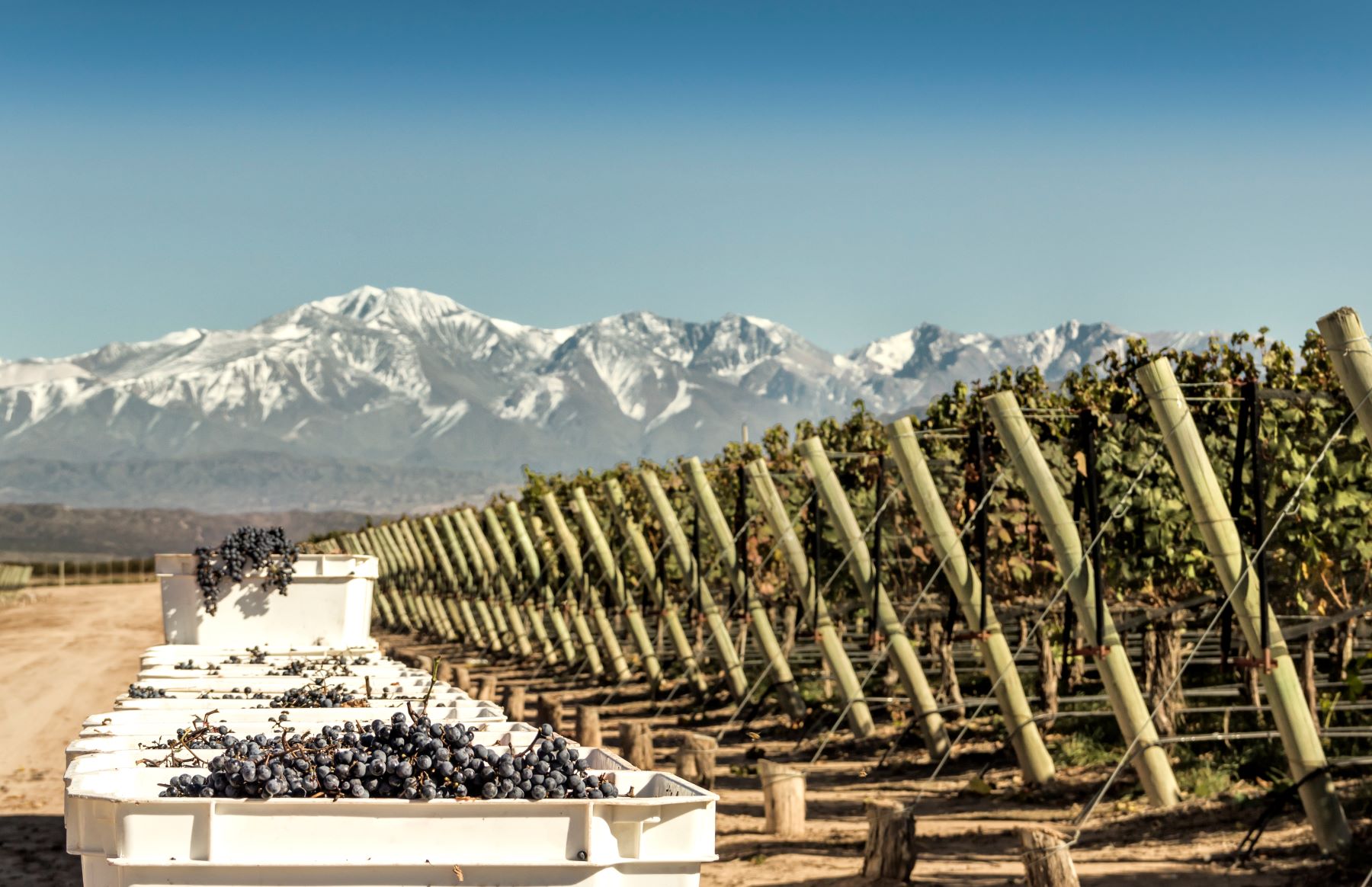Côt In Argentina

With the popularity of Malbec from Argentina, most consumers don’t think about the Cahors region of France and the Malbec grown there, which is known as Côt. They should. For one thing, the clones of Côt from France are becoming increasingly important in the production of fine red wines in Argentina. This was evident during a tasting which showed the evolution of Lurton’s super-premium (around $70-90 in Canada), Malbec based red blend, Chacayes, from the Alto Uco Valley in Mendoza.
Cahors, in southwest France near the Pyrenees, is considered the home of Malbec, which is used in their so called “black wines,” famously rustic and tannic, typically a blend of Côt and Tannat, but sometimes 100% Côt. Côt can be traced back to 150 AD, and is thought to have been brought to the region by the Romans.*
Malbec came to the Americas from Bordeaux in the 1840s, first to Chile, and eventually ended up in Mendoza in 1853, and also San Juan, via Michel Aimé Pouget, a French soil expert.
Now it is Argentina’s signature red wine grape.
Francois Lurton became a pioneer for premium red wine in Argentina’s Uco Valley with their Bodega Piedra Negra (“black stone”) – the first plantings in 1995, in what was an as yet unplanted northern part of the valley. Los Chacayes, located around 100 km south of the city of Mendoza, was the third IG (Indicación Geográfica) region in Argentina. There are now other wineries there, including Solo Contigo, Enzo Bianchi, Gimenez Riili, SuperUco and Corazón Del Sol, but Lurton is the only one that is allowed to put Chacayes on the label.
Terroir in Los Chacayes was originally shaped by the Ario Grande, and is largely granitic. It’s a dry, high altitude desert vineyard area, mostly around 1000-1100 metres but 1400 metres at its highest vineyard planting. The dryness stresses the vines, leading to intensity in the wines.
A recent tasting, held online under the guidance of Mr. Lurton himself, explored the changes in this signature wine starting with the 2002 vintage, and finishing with the 2017. The wine makes a very interesting transition in that the makeup dramatically changed with the introduction of Côt clones from France blended with the Malbec already growing in Argentina.
The old Côt clone, Côt Sans Sourer, is more productive but less full bodied than the Malbec (Côt Gran Malbec) that originally came to Argentina from Bordeaux. Lurton wanted to give better balance, elegance and structure to the wines, given the increasing frequency of warmer vintages. In the early days they would have to re-acidify the wines after harvesting late (for ripeness), but stopped that around 2007.
The original blends for Chacayes included Cabernet Sauvignon, but that was discontinued in 2015, so the wine is now just Malbec and Côt, roughly 50/50. Côt is fermented in concrete and aged in amphorae to retain freshness, whereas the Malbec sees some time in barrel.
Based on this tasting, the use of the Cahors Côt clone seems potentially an effective way to counter the effects of climate change on Malbec in Argentina.
Here are my notes from the tasting that illustrate the changes over the years:
2002: 85% Malbec, 15% Cab Sauv, 14.5%
- The very first vintage, from a wet season. Although still in decent shape, there is not a lot going on after 20 years. It’s a bit tired, perhaps.
2003: 85% Malbec, 15% Cab Sauv, 14.5%
- This was from one of the warmest, driest vintages ever seen in the area. Even with the age, this is now round and smooth, and still has some great tannic structure, with leather and dried fruit notes. Fantastic!
2007: 85% Malbec, 15% Cab Sauv, 14.5%
- A reasonably dry year, with quite a low yield. They had to wait for ripeness. It is tasting great, with a savoury, herbal note, smooth mid palate, still with lots of fruit, but not overripe. It has some appealing age complexity, including a welcome touch of VA.
2008: 85% Malbec, 15% Cab Sauv, 15.5%
- Another warm, dry year. This has great complexity, including more evidence of oak, giving woody, cedar notes. It is complex, smooth, very dry and food friendly. Lurton noted that one typical characteristic of the wine is the aroma of hay bales.
2015: 50% Malbec, 50% Côt, 15.5%
- A very rainy year, but it was mostly in early spring. It comes across quite soft and round, actually, but certainly has the structure to age. It’s a smooth, delicious, dry red but with more fruit than the older vintages, showing big purple berry fruit. Some amphorae were used.
2017: 50% Malbec, 50% Côt, 15.5%
- A fairly dry year, with an early harvest. More amphorae were used than for 2015. It has nice freshness, with minerality, and has strong fruit flavours without being overly fruit forward or juicy, like some Malbec. It is very elegant considering the 15.5%, with red currant fruit alongside the berries, and very firm tannins. If it were not for the Côt, this would probably have been a juice bomb.
*Reference: THE HISTORY OF MALBEC Argentina’s flagship grape By Pablo Lacoste (from the Wines of Argentina website)
